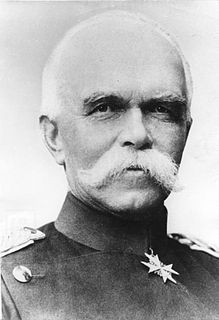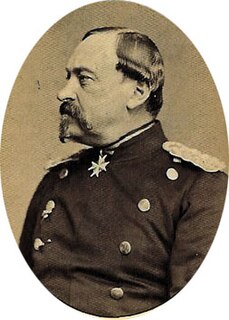 W
WAlbert was the King of Saxony and a member of the House of Wettin.
 W
WFriedrich August Eberhard, Prince of Württemberg was a royal Prussian Colonel General of the Cavalry with the rank of Generalfeldmarschall and Kommandierender General of the Guards Corps for more than 20 years. August was a member of the House of Württemberg and a Prince of Württemberg by birth.
 W
WHans Alexis von Biehler - was a Prussian general. He designed fortifications in many famous locations. Beginning in 1873, he saw fort construction in Cologne, Strasbourg, Poznań, Toruń, Königsberg, Ingolstadt, Metz, Kostrzyn, Spandau, Ulm, Mainz and Magdeburg.
 W
WFriedrich Julius Wilhelm Graf von Bose was a Prussian general who commanded the Prussian XI Corps during the Franco-Prussian War.
 W
WPaul Leopold Eduard Heinrich Anton Bronsart von Schellendorf was a Prussian general and writer, who served as Minister of War from 1883 to 1889.
 W
WWalther Franz Georg Bronsart von Schellendorff, Dr. jur. h.c., was a Prussian General of the Infantry à la suite, Adjutant-General to the Kaiser and King, and Prussian Minister of War.
 W
WGeorg Leo Graf von Caprivi de Caprera de Montecuccoli, born Georg Leo von Caprivi, was a German general and statesman who served as the chancellor of the German Empire from March 1890 to October 1894. Caprivi promoted industrial and commercial development, and concluded numerous bilateral treaties for reduction of tariff barriers. However, this movement toward free trade angered the conservative agrarian interests, especially the Junkers. He promised the Catholic Center party educational reforms that would increase their influence, but failed to deliver. As part of Kaiser Wilhelm's "new course" in foreign policy, Caprivi abandoned Bismarck's military, economic, and ideological cooperation with the Russian Empire, but was unable to forge a close relationship with the United Kingdom. He successfully promoted the reorganization of the German military.
 W
WErnest II was the sovereign duke of Saxe-Coburg and Gotha from 29 January 1844 to his death. He was born in Coburg; his father Ernest III, Duke of Saxe-Coburg-Saalfeld, became Duke Ernest I of Saxe-Coburg and Gotha in 1826 through an exchange of territories.
 W
WGottlieb Ferdinand Albert Alexis Graf von Haeseler was a German military officer of the Imperial Wilhelmine period, with final rank of Generalfeldmarschall.
 W
WJakob Freiherr von Hartmann was a Bavarian general who served in the Austro-Prussian War and Franco-Prussian War.
 W
WPrince Heinrich Ludwig Wilhelm Adalbert Waldemar Alexander of Hesse and by Rhine was a member of the House of Hesse-Darmstadt and a General of the Cavalry.
 W
WHermann, Prince of Hohenlohe-Langenburg was the 6th Prince of Hohenlohe-Langenburg and the second son of Ernst I, Prince of Hohenlohe-Langenburg, and Princess Feodora of Leiningen.
 W
WKraft Prinz zu Hohenlohe-Ingelfingen, was a Prussian general and military writer during the time of the German Empire.
 W
WAlexander August Wilhelm von Pape was a Royal Prussian infantry Colonel-General with the special rank of Generalfeldmarschall.
 W
WEduard von Pestel was a Prussian generalleutnant. He is best known for his defense of Saarbrücken and Sankt Johann before and during the Battle of Saarbrücken on 2 August 1870, the first major engagement of the Franco-Prussian War. Regarded as a war hero by the local population, he was made an honorary citizen of Saarbrücken and Sankt Johann.
 W
WAlbrecht Theodor Emil Graf von Roon was a Prussian soldier and statesman. As Minister of War from 1859 to 1873, Roon, along with Otto von Bismarck and Helmuth von Moltke, was a dominating figure in Prussia's government during the key decade of the 1860s, when a series of successful wars against Denmark, Austria and France led to German unification under Prussia's leadership. A moderate conservative and supporter of executive monarchy, he was an avid modernizer who worked to improve the efficiency of the army.
 W
WAlfred Graf von Schlieffen, generally called Count Schlieffen, was a German field marshal and strategist who served as chief of the Imperial German General Staff from 1891 to 1906. His name lived on in the 1905–06 "Schlieffen Plan", then Aufmarsch I, a deployment plan and operational guide for a decisive initial offensive operation/campaign in a two-front war against the French Third Republic.
 W
WLudwig Samson Heinrich Arthur Freiherr von und zu der Tann-Rathsamhausen was a Bavarian general.
 W
WAlfred Ludwig Heinrich Karl Graf von Waldersee was a German field marshal (Generalfeldmarschall) who became Chief of the Imperial German General Staff.
 W
WRobert Friedrich Wilms was a German surgeon.